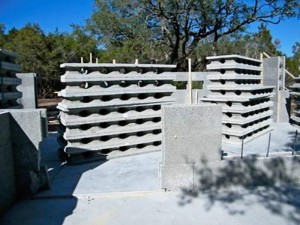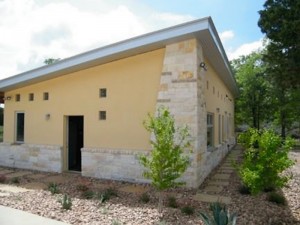Building with ICF
Insulated Concrete Forms (ICF) have been in use only for the past three/four decades. It is one of the most durable building materials available today. Yet many people don’t know
much about the ICF systems and their benefits. In this writing I’ll make an attempt to explain the basics of building with ICF, some of the benefits of the system and why I have chosen this method of building.
My first encounter with ICF was almost 15 years ago when I was doing research to find a building material for a house for my newly formed family.
My criteria was simple, durability and sustainability. The conventional method of light wood framing appealed to me only if the wood was harvested sustainably. At the time it was very difficult to verify the source of the harvesting methods. Also, the decay and infestation of a wood wall construction concerned me a great deal. But the main factor that steered me away from wood framing was the method of insulating the walls. These factors combined with excellent wind resistance pointed me to ICF wall systems.
As I moved from the design to the construction phase of the house, the reality set in for using the ICF system. Namely, the availability of the ICF and its users.
The biggest problem I ran into was an inertia to change from any conventional ways of thinking about building. In the late 1990s same fear of change was evident in all of my initial encounters with plumbers, electricians, HVAC guys, framers etc.
Since finding a reliable contractor who knew about ICF became an issue, I decided to take on the wall construction on my own with one of my college friends. After coming into
contact with some of the wisest people in the industry I was able to hire a great plumber, an excellent electrician and a very knowledgeable HVAC man. I’m greatly indebted to these free thinking people who helped me get started on this alternative construction journey. Of course that first dive into the world ICF and SIPs was costly at times. But the experience of using this particular ICF gave me some insight to the system. After fifteen years some of these people are still involved with us in the design/build process.
My reason for this long intro to ICF is simply to point the fact that you must have someone with experience of using ICF for a prospective construction project to be completed on time and within a budget.
An easy way of thinking about ICF is to think of a cinder block or a CMU block. Big difference is that an ICF is insulated and light weight. It can be produced and handled at a much bigger size. The blocks are simply stacked and the cavities are filled with reinforced concrete. Today’s ICF market is filled with various name brands. Many proprietary systems often confuse the end users from selecting a good match for their needs. I mainly put them in two categories, White and Grey. White blocks are made of new EPS (white polystyrene foam). And the Grey blocks are made with mixing recycled, post consumer white foam with grey portland cement. The grey blocks have 86% recycled content and basically uses up lot of the white foam (cups,packaging materials, etc.) that would otherwise be filling up the landfills and waterways.
I prefer to use the Grey blocks for the following reasons:
1. High recycled content. It is hard to find a wall system that performs like an ICF with this high recycled content.
2. Better insulation method. Even though it is similar in insulation value to the white foam blocks, the Grey ICF has much higher insulation than a typical wood framed wall.
3. Better finishing method between the two wall systems. With the White ICF you are limited by the conventional methods of finishing. Since the White ICF blocks are made of new foam the surface of the blocks are so smooth that to apply exterior finish (stucco, plaster, stone, etc.) one has to follow the conventional layers of furring strips, sheathing, moisture barrier, etc.
On the other hand the gray ICF surface is so porous that it is inherently designed to be adhered to any masonry product without additional layers of materials.



Ron Ferrell
ZZZZZZZZZZZZZZZZZZZZZZZZ man. On this urban project, i’m very interested in icf blocks, especially since we live in a tornado zone. what do you think?